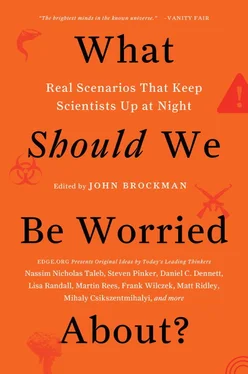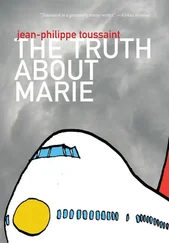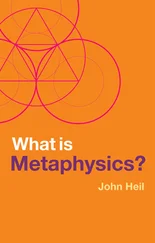MICHAEL I. NORTON
Associate professor of business administration, Harvard Business School; coauthor (with Elizabeth Dunn), Happy Money: The Science of Smarter Spending
Check the “most e-mailed” lists on Web sites for periodicals ranging from the New York Times to FoxNews.com and you’ll often see, sprinkled in with major world events and scandals, a story about a new scientific finding: “RED WINE LINKED TO LONGEVITY,” or “CLIMATE CHANGE CALLED INTO QUESTION,” or “EATING DIRT IS GOOD FOR YOU.”
While the increasing attention given to science by the media is primarily a positive development—surely we want a scientifically literate population, and research appearing only in obscure journals will not help achieve this goal—we should be worried about the exploding trend in “science by media,” for at least two reasons.
First, it is not clear that the best science is the science that gets known best. In one study that examined media coverage of research presented at a major scientific conference, fully 25 percent of the stories that appeared in the media never appeared in a scientific journal. That’s right: Fully one quarter of the science that laypeople encountered was not solid enough to pass muster when reviewed by experts. This same trend was true for research that made the front pages of major newspapers, the stories most likely to be read.
The problem is likely exacerbated by the rise of social media: Even if we miss the initial coverage of some new scientific finding, we are now more likely to encounter it as a tweet or a post on Facebook. Worse still, social media often encourage quick, superficial engagement. We see the title—“RED WINE LINKED TO LONGEVITY”—without reading further to find out, for example, the amount of red wine that might have health benefits (one ounce a day? one gallon?) and for whom (everyone? only people with red hair?).
To be clear, I am not blaming media (social or otherwise) for this problem. It’s not the job of journalists or laypeople to discern good from bad science. Even scientists in closely adjoining fields are often unable to discern good from bad science in that seemingly similar discipline. If anything, scientists themselves contribute to the problem. One analysis of media coverage of scientific findings demonstrated that roughly 50 percent of news stories overemphasized the positive effects of some experimental intervention. The biggest predictor of media engagement in this kind of spin? The presence of spin in summaries of the research written by scientists themselves.
Second, as the science that laypeople encounter is presented to them more and more by the media, the biases—presumed and actual—of those outlets will likely call into question the objectivity of the science appearing there and of the scientists who conducted the research. Consider two hypothetical research findings: one suggesting that gun possession increases violent assaults (“guns bad”), and one suggesting that gun possession decreases violent assaults (“guns good”). Imagine each of these articles published in the New York Times and also appearing on Fox News.
Would your opinion of the soundness of the underlying science be influenced by the publication outlet? My guess is that more people would be more likely to believe a “guns good” piece in the Times and a “guns bad” piece on Fox News, precisely because these pieces are at such odds with the general tenor of those publications. And considering the reverse shows the larger problem: Readers may discount “guns good” research that appears on Fox News and “guns bad” research in the New York Times regardless of the actual quality of the underlying science .
In sum, the science that laypeople encounter will become increasingly unfiltered by scientific experts. And even when science has been vetted by experts, laypeople will increasingly make their own determination of its credibility based not on the quality of the research but on the media outlet in which it appears. And this perceived credibility will determine their likelihood of passing that science along to others via social media. This “science by (social) media” raises the curious possibility of a general public that reads more and more science while becoming less and less scientifically literate.
UNFRIENDLY PHYSICS, MONSTERS FROM THE ID, AND SELF-ORGANIZING COLLECTIVE DELUSIONS
JOHN TOOBY
Founder of evolutionary psychology; codirector, Center for Evolutionary Psychology and professor of anthropology, UC Santa Barbara
The universe is relentlessly, catastrophically dangerous, on scales that menace not just communities but civilizations and our species as well. A freakish chain of improbable accidents produced the bubble of conditions necessary for the rise of life, our species, and technological civilization. If we continue to drift obliviously inside this bubble, taking its continuation for granted, then inevitably—sooner or later—physical or human-triggered events will push us outside and we will be snuffed like a candle in a hurricane.
We are menaced by gamma-ray bursts (which scrub major regions of their galaxies free of life); nearby supernovae; asteroids and cometary impacts (which strike Jupiter every year or two); Yellowstone-like supereruptions (the Toba supereruption some 70,000 years ago was a near-extinction event for humans), civilization-collapsing coronal mass ejections (which would take down the electrical grids and electronics underlying technological civilization in a way they couldn’t recover from, since their repair requires electricity supplied by the grid; this is just one example of the more general danger posed by the complex, fragile interdependence inherent in our current technology); and many other phenomena, including those unknown to us.
Here’s one that no one talks about: The average G-type star shows a variability in energy output of around 4 percent. Our sun is a typical G-type star, yet its observed variability in our brief historical sample is only one-fortieth of this. When or if the sun returns to more typical variation in energy output, this will dwarf any other climate concerns.
The emergence of science as a not wholly superstitious and corrupt enterprise is slowly awakening our species to these external dangers. As the brilliant T-shirt says, an asteroid is nature’s way of asking how your space program is doing. If we are lucky, we might have time to build a robust, hardened planetary and extraplanetary hypercivilization able to surmount these challenges. Such a hypercivilization would have to be immeasurably richer and more scientifically advanced to prevent, say, the next Yellowstone supereruption or buffer a 2-percent drop in the sun’s energy output. (Indeed, ice ages are the real climate-based ecological disasters and civilization enders—think Europe and North America under a mile of ice). Whether we know it or not, we are in a race to forge such a hypercivilization before these blows fall. If such threats seem too distant, low-probability, or fantastical to belong to the “real” world, then let them serve as stand-ins for the much larger number of more immediately dire problems whose solutions also depend on rapid progress in science and technology.
This raises a second category of menaces—hidden, deadly, ever adapting, already here—that worries me even more: the evolved monsters from the id that we all harbor (e.g., group identity, the appetite for prestige and power, etc.), together with their disguised offspring, the self-organizing collective delusions we all participate in and mistake for reality. (As the cognoscenti know, the technical term monsters from the id originated in Forbidden Planet .) We need to map and master these monsters and the dynamics through which they generate collective delusions if our societies are to avoid near-term, internally generated failure.
Читать дальше












